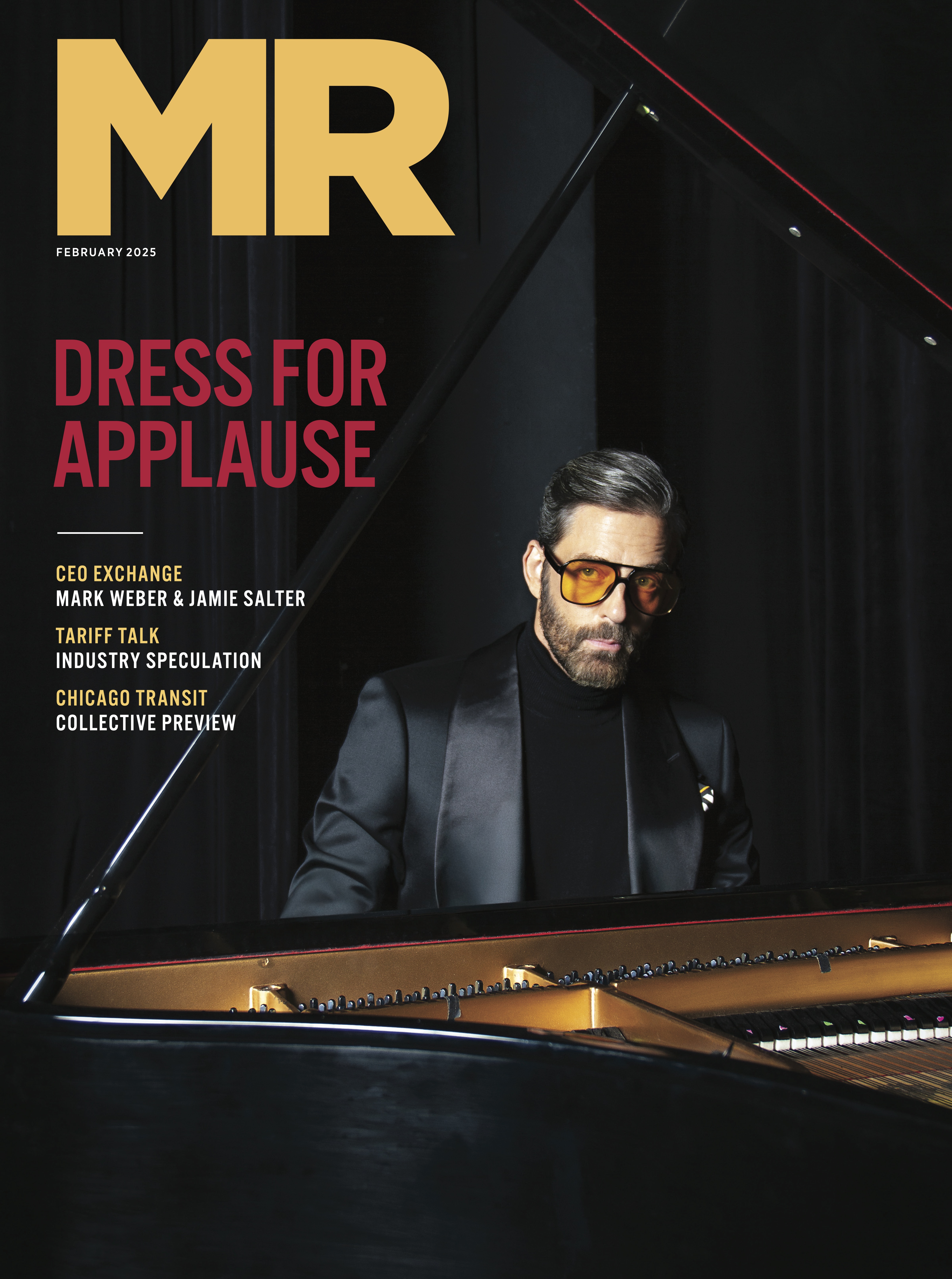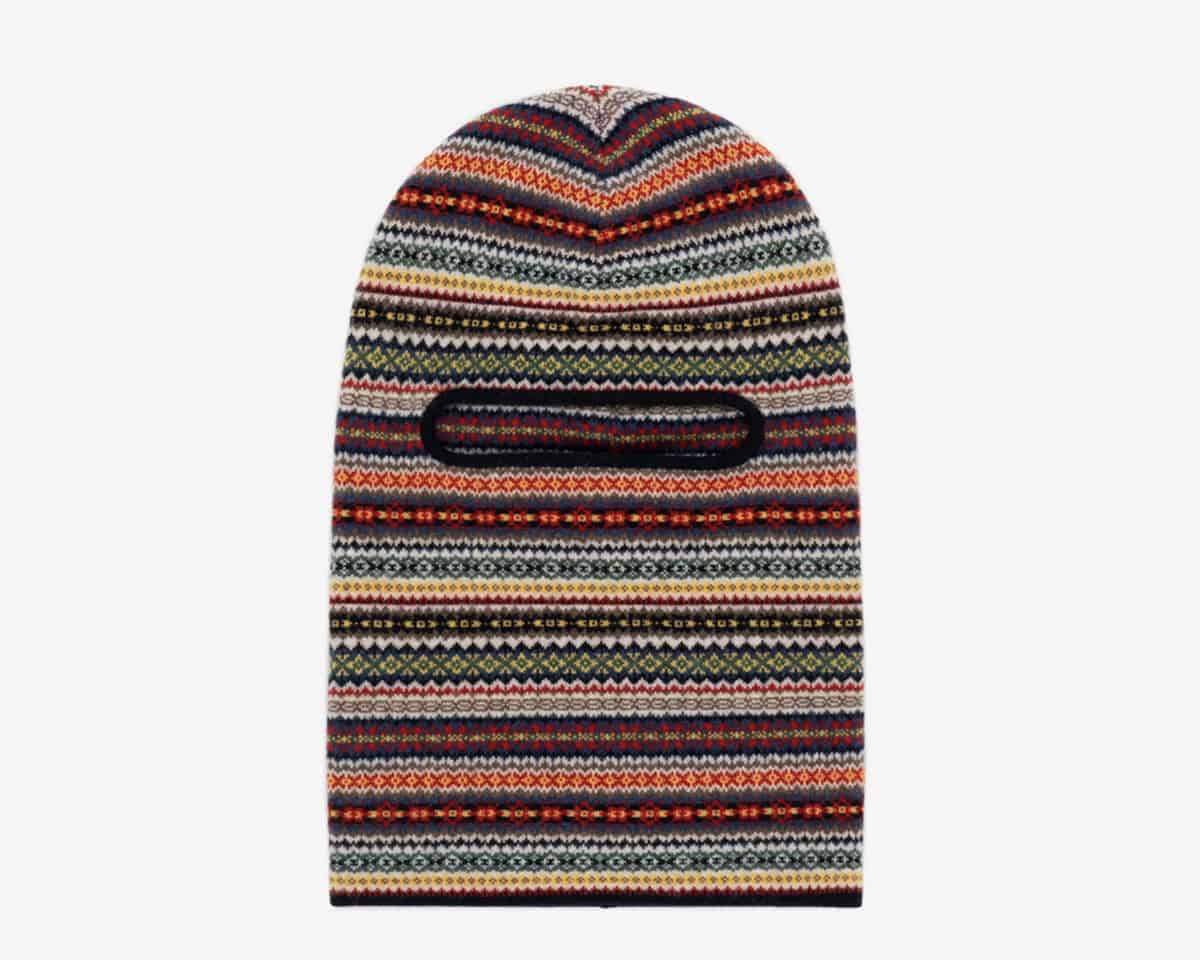FROM OUR FEBRUARY ISSUE: THE RETURN OF THE BALACLAVA

The entire MR team is proud to present our February 2024 issue. You haven’t gotten your copy yet? Feel free to page through a digital copy at Issuu, and we’ll continue to post individual stories here on MR-mag.com. If you haven’t been getting MR in print, be sure that you are on our mailing list for future issues by completing this form.
The Balaclava first appeared in the 1880s, during the Crimean War. To keep warm in the frigid Russian weather, British soldiers were sent head and face coverings made by women and girls back in the U.K., who often aided in war efforts by providing hand-knits to soldiers. The coverings then took on the name of the now Ukranian town where the battle was fought.
With its one large opening for eyes, nose, and mouth, the covering evolved into the ski mask, which covers more of the face and features three smaller openings for each appendage. Both went on to become infamous as coverings for criminal activities and political resistance, such as the Zapatista uprising in Mexico, where the coverings were not just a way for the militants to conceal their identities but also became a symbol of their collectivity. Then in 2011, the performance art group, Pussy Riot, put a spin on the balaclava’s Russian roots by wearing brightly-colored, ski-mask style balaclavas to retain their anonymity while performing songs about feminism, LGBT rights, and their President Vladimir Putin. Even in Wes Anderson’s 2009 flick, Fantastic Mr. Fox, the animals wear balaclavas, which they refer to as “bandit hats” when confronting farmers who are destroying their homes.
There are only two reasons to wear a balaclava or ski mask, and that is to either keep your face warm or disguise it. Since most of the world does not see freezing temperatures for most of the year, the coverings have evolved into being used more to hide the face for both the nefarious as well as for some, a form of self-protection from the ever-evolving issue of surveillance and facial recognition. Due to their renewed popularity, the city of Philadelphia can now fine people for wearing balaclavas or ski masks in some public spaces, and those wearing them in parks, schools, daycare centers, transit, and city-owned buildings may be fined $250.
In the fashion world, the balaclava has been spotted on the recent runways of Loewe, Rick Owens, and Kenzo and, ultimately, the faces of some famous men in the past few winter seasons, such as ASAP Rocky, Timothée Chalamet, Jared Leto, and Justin Bieber.
To probe more into the balaclava’s comeback, I called up the most knowledgeable fashion scholar that I know, Dr. Valerie Steele, the Director and Chief Curator of the Museum at The Fashion Institute of Technology in New York City, to ask her to take on its return. She said, “Whenever we see a trend like this, it’s always a perfect storm of partially related causes. People have gotten comfortable covering their faces and wearing masks because of Covid.”
Dr. Steele further explained that given the historical context of the balaclava and its being worn for criminal and political activities, “one of the aspects is also what I call the ‘Charisma of Evil,’ where for perverse reasons, evil is perceived as more interesting and engaging than goodness. A little bit of an evil thing can be perceived as sexy. After all, the dandy is ‘the dark prince of elegance.’” She also cited that since the ’80s, people love anything that makes them look sporty, and many classic balaclavas—with the one large opening—can be easily converted into a neck gaiter or hat, further pushing it into the athleisure category.
So whether you want to appeal to a customer’s inner bad boy or just offer him a new (again) cold-weather accessory, the balaclava will have you covered for AW/24.
Above: Drake’s x Aimé Leon Dore balaclava.



Crimean war was in the 1850s.